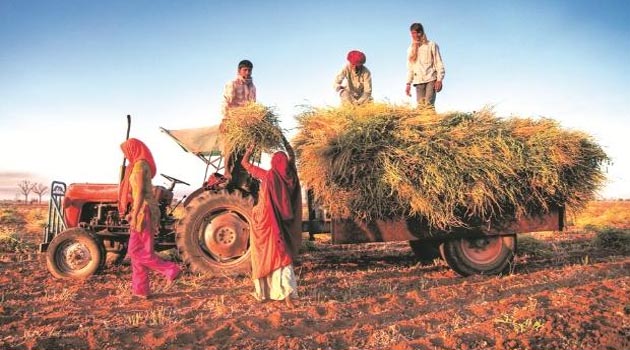Delayed claim settlement mars govt’s crop insurance scheme
The Narendra Modi-led central government’s ambitious Pradhan Mantri Fasal Bima Yojana (PMFBY), in the first two years of its operations, has been set back by issues like low coverage among non-loanee farmers and delayed or non-payment of claims, a high-powered panel has found.
If the issues with PMFBY are not addressed in time, they could impact the government’s official target of covering 50 per cent of the gross cropped area (GCA) under insurance by 2019, the panel has said.
“Though all complaints, particularly with regards to non-payment, might not be correct, it only demonstrates the need for a robust process backed by technology. That will assure farmers that their genuine claims are being settled in time. Any deviation in this regard will prove to be discouraging and affect the volumes in the long run,” the official panel on Doubling Farmers’ Income (DFI) has said in the chapter on ‘Risk Management in Agriculture’ in its report.
PMFBY, meant to provide a comprehensive crop insurance for farmers at a low premium, was started in 2016. It replaced all other existing insurance schemes except the Restructured Weather-Based Crop Insurance Scheme (WBCIS).
An area-yield based programme where farmers are charged a uniform low premium rate of 2 per cent for all kharif crops, 1.5 per cent for all rabi crops, and 5 per cent for commercial and horticulture crops, PMFBY has been one of the most ambitious programmes of the National Democratic Alliance (NDA) government.
The difference between the premium paid by the farmer and the actuarial fair premium (APR) is subsidised by the government (shared by central and state governments on 50:50 basis). Under PMFBY, according to the panel, over 57 million hectares of GCA was covered during 2016-17 for a sum insured of Rs 2,050 billion with a premium volume of Rs 215 billion ($ 3.3 billion).
In 2017-18, the corresponding figures were a coverage of 47.52 million hectares of GCA for a sum insured amount of Rs 1916.34 billion and a premium volume of Rs 243.51 billion. By 2018-19, there could potentially be a coverage of over Rs 3,500 billion of sum insured, requiring over Rs 300 billion premium subsidy, the panel estimated.




Leave a Reply